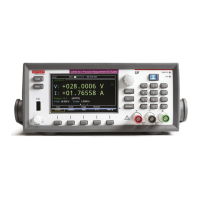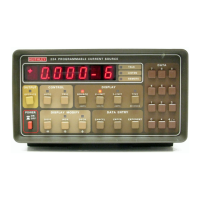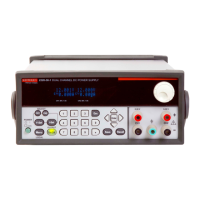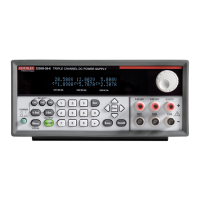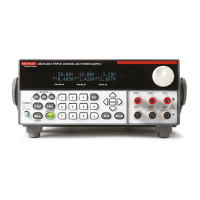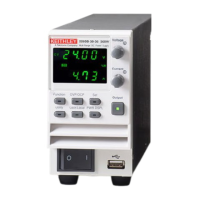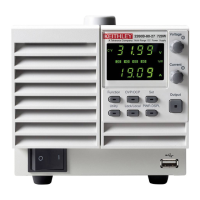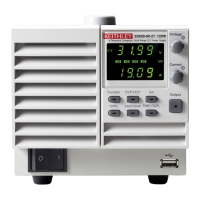• Where possible, use automatic handlers so operators
are not required to access the DUT or other potentially
hazardous areas.
• Provide training to all users of the system so they
understand all potential hazards and know how to protect
themselves from injury.
• In many systems, during power up, the outputs may be in
an unknown state until they are properly initialized. Make
sure the design can tolerate this situation without causing
operator injury or hardware damage.
Do not cover the ventilation holes on the top, sides, or
bottom of the instrument.
Make sure the instrument is positioned so that it is easy to
reach any disconnecting devices, such as the power cord
and the power switch.
Power up the instrument
The Series 2281S operates at 100 V, 120 V, 220 V, or 240 V
with a frequency of 50 Hz or 60 Hz. Make sure that the AC
line voltage indicator in the center of the rear-panel power
module matches the AC line voltage in your facility.
To keep users safe, always read and follow all safety warnings
provided with each of the instruments in your system.
Install the instrument
You can use the Series 2281S on a bench or in a rack.
Please see the instructions that came with your rack-mount
kit if you are installing the Series 2281S in a rack.
To prevent damaging heat build-up and ensure specied
performance, make sure there is adequate ventilation and air
ow around the instrument to ensure proper cooling.
On some sensitive or easily damaged devices under
test (DUTs), the instrument power-up and power down
sequences can apply transient signals to the DUT that
may aect or damage it. When testing this type of DUT,
do not make nal connections to it until the instrument
has completed its power-up sequence and is in a known
operating state.
